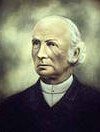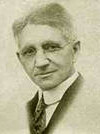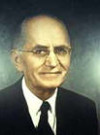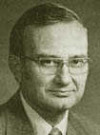Where does the name Wartburg come from?
Where does the name Wartburg come from?
Wartburg College is named after one of Europe’s best-known landmarks, the Wartburg Castle. The Wartburg Castle is a fortress built in 1067 overlooking Eisenach, Germany. During the stormy days of the 16th-century Reformation, the castle provided a refuge for Martin Luther, whose work led to the formation of the Lutheran church.
International Partnerships
Wartburg College signed a formal Agreement of Cooperation with the Wartburg Castle in Eisenach, Germany, which makes possible cultural exchanges and visits, study opportunities and internships, annual choir and band performances in the castle with permission for radio and TV broadcasts, a castle exhibit and room on the Wartburg campus. The college also signed an agreement between Deutsche Welle broadcasting in Bonn, Germany, in 2012 for internships and other exchanges. The agreement builds on the partnership established in 1992 by the cities of Waverly and Eisenach to become sister cities.
Wartburg College History
Wartburg College traces its roots to 1852, when Pastor Wilhelm Löhe of Neuendettelsau, Bavaria, sent Pastor Georg Grossmann to America to work as a missionary of the Lutheran faith. With five students, Grossmann founded a teacher-training school for German immigrants in Saginaw, Mich.
The college was moved several times to accommodate the shifting tide of Lutheran immigration (Dubuque, St. Sebald near Strawberry Point, Waverly, and Clinton in Iowa and Galena and Mendota in Illinois). It permanently located in Waverly in 1935. The name Wartburg was given to the college when it was located in rural St. Sebald because the wooded countryside of the area reminded Grossmann of the Thuringian Forest where the Wartburg Castle is located.

Saginaw, Michigan (1852-53)

Mendota, Illinois (1875-85)

Dubuque, Iowa (1853-57)

Clinton, Iowa (1894-1935)

St. Sebald, Iowa (1857-68)

Waverly, Iowa (1879-1933, 1935-present)

Galena, Illinois (1868-75)
The Old Main in Clinton, Iowa, was home to Wartburg College during the late 1890s to early 1930s.
Historic Timeline

Georg Grossmann
1852-1868, 1878-1894

John Klindworth
1868-1875

Sigmund Fritschel
1875-1885

Friedrich Richter
1894-1899 (Clinton)

Friedrich Lutz
1894-1905

Otto Kraushaar
1899-1907 (Clinton)

Gerhard Bergstraesser
1905-1909

John Fritschel
1907-1919 (Clinton)

August Engelbrecht
1909-1933

Otto Proehl
1919-1935 (Clinton)

Edward J. Braulick
1935-1945

Conrad Becker
1945-1964

John Bachman
1964-1974

William Jellema
1974-1980

Robert L. Vogel
1980-1998

Jack R. Ohle
1998-2008

Darrel D. Colson
2009-2022

Rebecca Ehretsman
2022-present